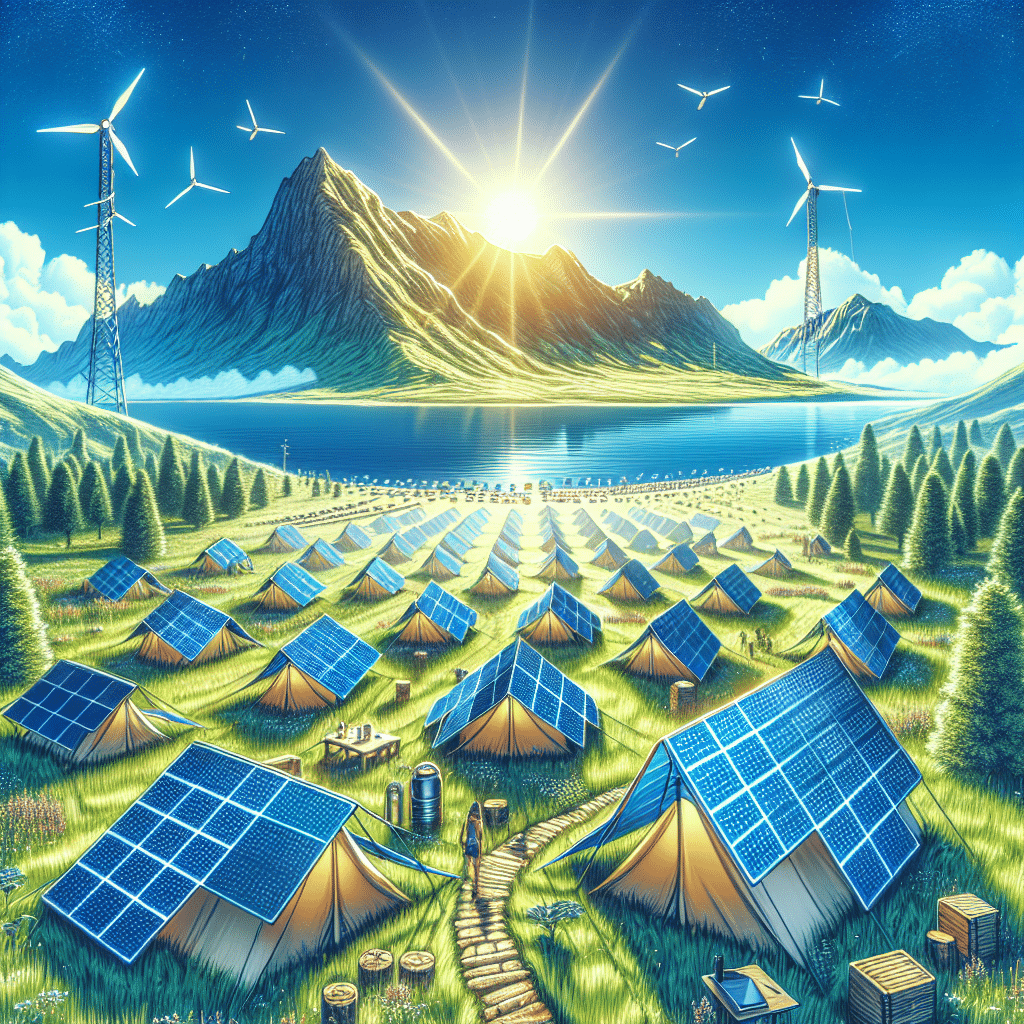The Ultimate Guide to Solar-Powered Tents and Canopies
1. Understanding Solar-Powered Tents and Canopies
Solar-powered tents and canopies represent a significant innovation in outdoor gear, combining traditional shelter with renewable energy technology. These structures typically integrate lightweight solar panels that capture sunlight and convert it into usable electricity. They cater to outdoor enthusiasts, campers, and even festival-goers seeking a sustainable way to enhance their camping experience.
2. Benefits of Solar Power in Tents and Canopies
A. Renewable Energy Source
Solar power is abundant and renewable, allowing users to harness a free energy source directly from the sun. This reduces reliance on batteries, generators, or other non-renewable energy sources.
B. Convenience and Comfort
With solar power, campers can charge electronic devices, run lighting systems, or operate small appliances. This adds a layer of comfort and convenience to the outdoor experience.
C. Environmental Impact
Utilizing solar energy reduces the carbon footprint associated with traditional camping. Environmentally-conscious users can enjoy nature while minimizing their impact on it.
3. Types of Solar-Powered Tents and Canopies
A. Camping Tents
These are designed specifically for overnight camping and often include features such as built-in solar panels and light fixtures. Models vary in size, accommodating everything from solo campers to families.
B. Event Canopies
Larger canopies suitable for events or festivals offer solar solutions to keep areas well-lit without heavy reliance on grid power. They often serve multiple purposes, featuring protection from elements as well as functionality for electronics.
C. Backpacking Tents
While more lightweight and compact, these tents also integrate solar technology to provide essential energy without the bulk, making them suitable for long-distance hikers.
4. Key Features to Look For
A. Solar Panel Efficiency
When selecting a solar-powered tent or canopy, evaluate the solar panel’s efficiency rating. Generally, higher wattage panels translate to greater energy production capabilities, impacting overall functionality.
B. Battery Storage
Some models come with built-in batteries that store energy collected throughout the day. Check the battery capacity to determine how much energy can be stored for nighttime use.
C. Durability and Weather Resistance
The ability to withstand various weather conditions is crucial. Look for tents and canopies made from high-quality materials that resist UV rays, rain, and wind.
D. Weight and Portability
If you plan to hike or transport your tent frequently, consider its weight and how easily it can be packed. Many modern designs focus on a balance between durability and lightweight construction.
5. Setting Up a Solar-Powered Tent
A. Location Selection
When setting up, choose a sunnier spot to maximize solar exposure. Ensure the tent is away from natural obstructions that could block sunlight.
B. Securing the Solar Panels
Position solar panels facing directly towards the sun for optimal power generation. Some tents typically have adjustable panels, allowing for better angling throughout the day.
C. Battery Connection
Connect the solar panels to the batteries following the manufacturer’s guidelines. Some models may offer quick-connect features to streamline this process.
6. Popular Brands and Models
A. Big Agnes
Known for innovative outdoor gear, Big Agnes integrates solar technology seamlessly into their tents, making them a popular choice among campers.
B. Coleman
Coleman offers a range of affordable solar-powered canopies, focusing on family-friendly designs and user-friendly setups.
C. REI Co-op
REI combines quality with sustainability, providing solar-powered tents that emphasize eco-friendliness without compromising durability.
7. Maintenance Tips
A. Solar Panel Care
Regularly inspect solar panels for dirt and debris. Clean them gently with a soft cloth to maintain maximum efficiency.
B. Tent Care
Keep the tent clean and dry to prevent mold and mildew. Store it properly to prolong its lifespan, especially during long periods of inactivity.
C. Battery Management
Charge batteries adequately and avoid complete depletion to extend their lifespan. Follow storage instructions during off-seasons.
8. Alternative Energy Options
While solar is the primary focus, consider hybrid solutions that incorporate wind or kinetic energy. These alternative sources can complement solar power, especially in less sunny conditions.
9. Safety Considerations
A. Electrical Safety
Avoid using damaged solar panels or batteries, as they can create hazards. Always adhere to safety instructions provided by manufacturers.
B. Fire Safety
Be cautious when using any appliances that require electrical energy. Ensure they are rated for outdoor use and regularly check for overheating.
10. Cost and Investment
Expect to invest more in solar-powered tents than conventional ones. However, consider the long-term benefits of energy savings, increased comfort, and reduced environmental impact. Additionally, check for warranties or guarantees offered by manufacturers.
11. Closing the Gap: Future Innovations
As technology advances, expect improvements in solar efficiency, reduced weight materials, and more integrated smart features for solar tents and canopies. Future models may include automated solar tracking for optimal energy collection and enhanced battery management systems.
12. User Experiences and Reviews
Research customer reviews and experiences before making a purchase. Online forums, social media groups, and outdoor gear review sites can provide valuable insights into the performance and reliability of specific models.
13. Solar-Powered Accessories
Enhance your solar-powered tent experience with additional accessories like solar chargers, portable lights, or solar showers. These devices can make your outdoor stay even more comfortable.
14. Community and Connectivity
Participate in outdoor communities focused on solar camping. Engaging with like-minded individuals can lead to shared tips, experiences, and recommendations for the best solar gear available.
15. Regulatory Considerations
Be aware of local regulations regarding the use of solar-powered devices in specific camping areas, especially in protected or environmentally sensitive zones. Some parks may have restrictions in place.
16. Conclusion: An Eco-Friendly Future
Solar-powered tents and canopies cater to modern camping needs while promoting sustainability. They offer outdoor enthusiasts not just a place to lay down at night, but also a platform that enhances their camping experience without compromising the environment.
